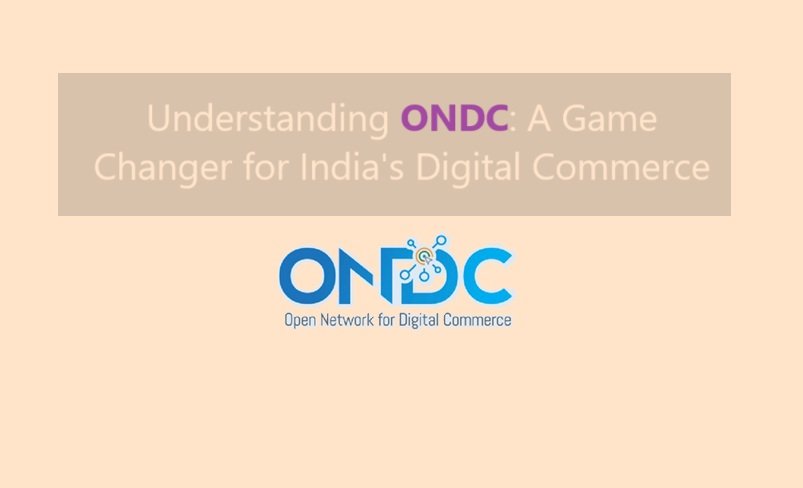
Introduction
The Open Network for Digital Commerce (ONDC) is set to revolutionize India’s e-commerce landscape by breaking the dominance of large platforms like Amazon and Flipkart. Launched by the Government of India, ONDC aims to create an open, decentralized digital network that enables businesses of all sizes to compete on a level playing field.
In this detailed article, we will explore:
- What ONDC is and how it works
- Its impact on buyers, sellers, and intermediaries
- The benefits and challenges of the ONDC ecosystem
- How you can leverage ONDC for your business
What is ONDC?
ONDC is an open network protocol that facilitates transactions across different platforms, ensuring interoperability between buyers, sellers, and service providers. Unlike traditional e-commerce platforms that control their marketplace, ONDC allows any business to participate and connect with customers directly.
Key Features of ONDC:
- Interoperability – Buyers and sellers can interact across multiple platforms.
- Decentralization – No single entity owns the marketplace; it’s a network-driven model.
- Vendor Neutrality – Equal opportunity for all businesses, small or large.
- Standardized Transactions – Unified payment, order management, and logistics system.
- Open Access – Buyers can access products from multiple platforms through a single interface.
How Does ONDC Work?
Think of ONDC as the UPI (Unified Payments Interface) of e-commerce. Just like UPI allows seamless transactions across different banks, ONDC allows customers to buy products from multiple sellers without being restricted to one platform.
Example:
- A customer searching for a mobile phone on an ONDC-supported app can see products from Flipkart, Amazon, and independent retailers all in one place.
- Sellers do not need to register on every e-commerce platform. Instead, they integrate once with ONDC and reach buyers across multiple platforms.
Impact of ONDC on Different Stakeholders
For Buyers
✅ Greater choice: Access to a wider range of products and services.
✅ Better prices: More competition means lower prices.
✅ No platform monopoly: Freedom to shop without being restricted to a single marketplace.
For Sellers (MSMEs & Local Businesses)
✅ Reduced dependency on e-commerce giants.
✅ Lower commissions and transaction costs.
✅ Direct engagement with customers.
For Logistics & Payment Providers
✅ More business opportunities as they can integrate directly into ONDC.
✅ Standardized payments and order processing across multiple platforms.
Advantages of ONDC
- Democratization of E-commerce: ONDC removes platform monopoly, benefiting small businesses.
- Cost Efficiency: Sellers avoid high commission fees imposed by large marketplaces.
- Enhanced Customer Reach: A single integration allows sellers to appear on multiple apps.
- Localized Commerce Growth: Encourages local businesses, Kirana stores, and startups to go digital.
Challenges and Concerns
❌ Adoption Hurdles: Sellers need technical integration and awareness.
❌ Customer Trust: Buyers are used to familiar platforms like Amazon.
❌ Logistics & Support: Ensuring smooth operations across a decentralized system.
❌ Regulatory Compliance: Standardizing processes without excessive regulations.
How Can Businesses Leverage ONDC?
For Sellers:
- Register on an ONDC-compatible platform like Paytm, Mystore, Craftsvilla, etc.
- Integrate product catalogs and set up digital payments.
- Optimize pricing and logistics to attract customers.
For Startups & Developers:
- Build ONDC-enabled applications to connect buyers and sellers.
- Provide logistics and fintech solutions within the network.
For Customers:
- Use ONDC-powered apps to compare prices and access a wider variety of products.
- Support local businesses by choosing direct sellers.
Conclusion
ONDC has the potential to transform the digital commerce ecosystem in India, much like UPI did for digital payments. By empowering small businesses, reducing monopolistic control, and offering a more competitive marketplace, ONDC can redefine how India shops online.
However, its success depends on widespread adoption, robust infrastructure, and seamless customer experiences. As ONDC evolves, businesses and consumers alike must stay informed and prepared to leverage this new era of e-commerce.
Would you like to explore how your business can benefit from ONDC? Let us know in the comments!






